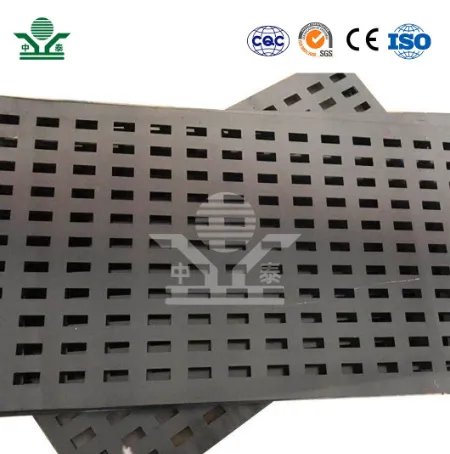Types of Perforated Sheet Metal
Perforated sheet metal is an incredibly versatile material that finds applications across various industries due to its unique properties. Characterized by a pattern of holes, perforated sheets are created by punching, drilling, or stamping a series of holes into sheets of metal. The choice of hole size, pattern, and thickness allows for the customization of the sheet metal for specific purposes. This article delves into the different types of perforated sheet metal, their applications, and the factors that influence their selection.
1. Material Types
Perforated sheets can be made from a variety of metals, each offering distinct characteristics
- Stainless Steel Known for its resistance to corrosion and high strength, stainless steel perforated sheets are ideal for food processing, pharmaceutical, and chemical industries. They maintain durability and aesthetic appeal even in harsh environments.
- Aluminum Lightweight and highly resistant to corrosion, aluminum perforated sheets are commonly used in architectural applications, signage, and HVAC systems. Their ease of fabrication makes them a favorite among designers and builders.
- Carbon Steel This type is often used in applications requiring strength and durability, such as security grilles and automotive components. However, carbon steel may require a protective coating to prevent rusting.
- Copper and Brass These materials offer excellent aesthetic value and are frequently used in decorative applications. Their antibacterial properties also make them suitable for certain medical and hygienic applications.
2. Hole Patterns
The design of the holes in perforated sheet metal can vary significantly, influencing both functionality and aesthetics. Common hole patterns include
- Round Holes The most popular and versatile, round holes are used for a wide range of applications, from filtration to decoration.
- Square Holes Ideal for specific filtration needs and providing a unique visual effect, square holes are often used in architectural panels and acoustical applications.
- Slotted Holes With elongated shapes, slotted holes provide enhanced airflow while allowing for drainage and filtering. They are frequently used in acoustic panels and machinery guards.
- Complex Patterns Custom patterns, including diamond shapes or ovals, can be created for artistic applications or for specific functional requirements, enhancing the design aspect of perforated sheets
.types of perforated sheet metal

3. Applications
Perforated sheet metal serves multiple purposes across several industries
- Architecture In architectural applications, perforated sheets are used in facades, sun screens, and ceilings to enhance aesthetics while providing ventilation and light control.
- Filtration Industries such as food processing, pharmaceuticals, and chemical manufacturing rely on perforated sheets for filtration processes. The size and design of the holes can be tailored to meet specific filtration needs.
- Acoustics Perforated sheets are used in soundproofing solutions. The controlled spacing of holes allows for sound absorption while maintaining structural integrity.
- Safety and Security Many industries utilize perforated sheets for safety barriers, machine guards, and safety grilles that provide visibility and protection simultaneously.
4. Factors Influencing Selection
Selecting the appropriate type of perforated sheet metal depends on various factors
- Material Properties Consider the environment in which the sheet will be used. Corrosion resistance, strength, and weight are essential aspects to evaluate.
- Hole Size and Pattern The intended application will dictate the most suitable hole size and pattern. Understanding the functional requirements is crucial.
- Aesthetic Considerations For applications where appearance is significant, the choice of material and hole pattern can greatly impact the final design.
- Cost and Availability Budget constraints and material availability can also affect the selection process. Custom patterns may require longer lead times, which should be accounted for in project planning.
In conclusion, perforated sheet metal is an essential material with diverse applications across multiple sectors. By understanding the various types of perforated sheets, their properties, and specific applications, industries can effectively utilize this versatile material to meet their needs. Whether for functional purposes or aesthetic enhancements, the adaptability of perforated sheet metal continues to make it a valuable resource in modern manufacturing.
-
Why Galvanized Trench Cover Steel Grating Resists Corrosion
NewsJul.10,2025
-
The Versatility and Strength of Stainless Expanded Metal Mesh
NewsJul.10,2025
-
Load Calculations in Steel Grating Platforms
NewsJul.10,2025
-
Keeping Pets and Kids Safe with Chicken Wire Deck Railing
NewsJul.10,2025
-
Hole Diameter and Pitch for Round Perforated Metal Sheets
NewsJul.10,2025
-
Aluminium Diamond Mesh in Modern Architecture
NewsJul.10,2025
Subscribe now!
Stay up to date with the latest on Fry Steeland industry news.

